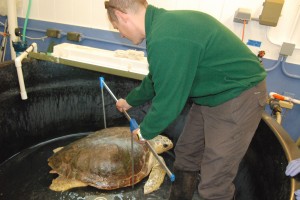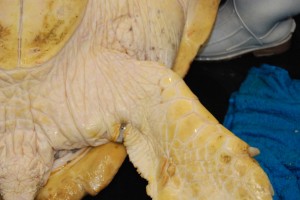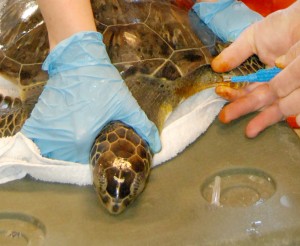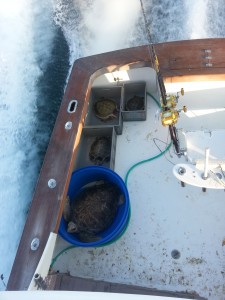I don’t know about you, but knowing that Lou has survived ingesting a fish hook and is happily released in the ocean sure makes me feel good! Lou and 3 Kemp’s Ridleys were released near the Gulf Stream on March 29, leaving 8 residents in the rehab.
All sea turtles are released with at least one type of tag, sometimes two or three. Lou was outfitted with a PIT tag and metal flipper tags along with one of the Kemp’s ridleys. The remaining two Kemp’s were too small for flipper tags and are only carrying a PIT tag.
The day before the release, North Carolina Sea Turtle Biologist Matthew Godfrey arrived to apply the tags. The tagging forms include taking the turtle’s measurements prior to release.
Metal flipper tags are then applied to the rear flippers. Two tags are used in case one falls off. The unique numbers are linked to the turtle in a national database. The metal tags are modified cattle tags used all over the world for sea turtle research. The brownish coloration near the tag is from the iodine used to clean the application area.
PIT tags are applied to every turtle that is released from the rehab. Some of the turtles we release are considered too small for flipper tags and will only have PIT tags. These passive microchips about the size of a grain of rice are similar to the microchips we give our pets. The PIT tag is inserted into the muscle of the flipper with a needle and can only be read with a scanner. (This turtle is a green that has not yet been released.)
Once all this work is done, the turtles are ready for their big day!




